






InUrSkn is more than just a skin a hair and body clinic. It is Dr. Sejal's promise of providing minimal intervention patient care which is holistic, personalized and humane.












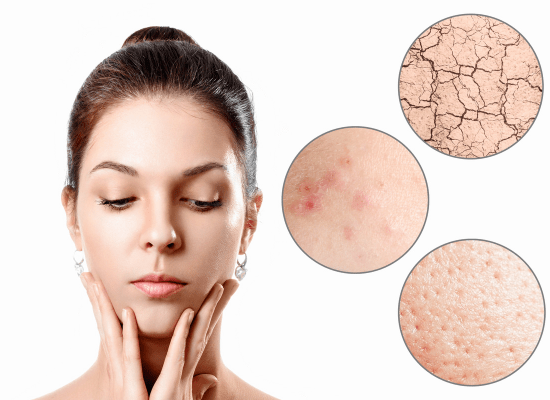
Heat boils, or ‘Bal Tod’, are bacterial infections of hair follicles, commonly caused by Staphylococcus aureus bacteria. They manifest as red, tender, pus-filled bumps, usually enlarging and becoming painful until they rupture, releasing pus. Common on the face, neck, armpits, shoulders, and buttocks, they can appear anywhere with hair follicles. Triggers include poor hygiene, diabetes, immune disorders, or harsh chemicals exposure. While usually not serious, recurrent or clustered boils, especially with fever, warrant medical attention. Treatment typically involves warm compresses, with severe cases possibly requiring antibiotics.
Read More
Dry skin, characterized by scaling, itching, and cracking, often affects various body parts. Factors like cold weather, hot showers, and harsh soaps contribute to it. Gentle skincare with suitable products effectively manages dry skin, promoting smoother, healthier skin.
Read More
Invisible UV rays from the sun affect the skin, causing premature aging, sunburn, and an increased risk of skin cancer. Protective measures such as sunscreen, clothing, and avoiding sun exposure are crucial for maintaining healthier skin and preventing long-term damage.
Read More
There are various types of white spots and patches. Some of the common ones include:
Vitiligo
P Alba
P Versicolor (also known as Tinea Versicolor)
Idiopathic Guttate Hypomelanosis (IGH)
The causes and treatments of these conditions can vary.
Read More
Pores are skin openings that facilitate the release of sebum and sweat. There are two types: sebum-transporting pores and sweat-facilitating pores. Factors like excess sebum production or aging can enlarge pores, leading to cosmetic concerns. Skincare treatments aim to minimize their appearance for smoother-looking skin.
Read More
Hyperhidrosis is excessive sweating beyond normal responses, disrupting daily life and causing social anxiety. Treatments aim to reduce sweat production for comfort and confidence.
Read More
Pruritus, or itchy skin, is an irritating sensation that induces scratching and is often a symptom of underlying issues such as allergies, irritants, or diseases. It may occur either locally or across the body. While typically benign, persistent or severe itching can impair quality of life or indicate serious health concerns. Addressing the root cause, along with topical treatments like anti-itch creams or antihistamines, can alleviate itching, providing relief and helping prevent secondary infections caused by excessive scratching.
Read More

Skin, being the body’s largest organ, performs vital functions like protecting against external hazards, regulating temperature, and serving as a defense against infections. Due to its extensive exposure, it’s prone to diverse problems. Self-medication or untrained advice can worsen situations.
Choosing a dermatologist over a general practitioner is advisable as they have specialized training in diagnosing and treating skin, hair, and nail conditions. While general practitioners manage a broad spectrum of health issues, they might lack in-depth knowledge in dermatology for complex or persistent skin disorders.
Dermatologists are updated with the latest in skin care and possess the expertise to differentiate between conditions that may appear similar yet require distinct treatments. They can provide accurate diagnoses swiftly and offer the most current, effective treatments and medications, ensuring a quicker resolution of skin ailments. Moreover, certain skin conditions might mirror systemic diseases, and dermatologists are often able to identify these underlying issues, providing a comprehensive care pathway.
Thus, for any skin-related concerns, it’s prudent to seek a professional evaluation from a dermatologist, ensuring you receive specialized, up-to-date care which significantly contributes to maintaining overall skin health and addressing any underlying issues promptly.
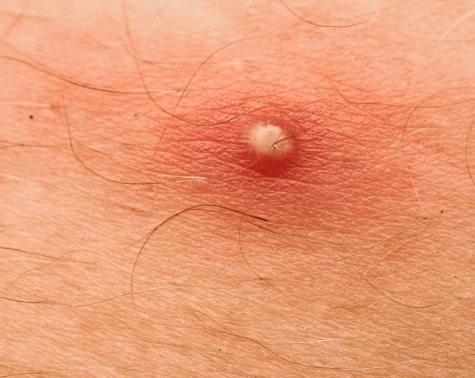
Heat Boils, or ‘Bal Tod’ in Hindi, refer to an infection of the hair follicle caused by bacteria. This is one of the most common bacterial skin infections, and probably every individual experiences it at least once in their lifetime.
Heat Boils typically start from pulling hair, either by accident or on purpose. These are seen as small to large lesions that are filled with pus. Most often, these are seen on areas like the legs, armpits, buttocks, and scalp. However, they can occur on practically any part of the body.
They start off as a small ‘boil,’ increase in size, and eventually burst open, oozing out pus. If left untreated, the infection moves deeper into the skin and can cause an abscess. An abscess is a very deep and large lesion that often needs surgical intervention.
As these are the result of a bacterial infection, they are contagious and can spread from one individual to another.
Main Causes of Heat Boils are as below:
Pulling of hair
Nicks and cuts caused by shaving
Blocking of pores due to oil massage, dirt, sweat, etc.
Factors that aggravate (not the cause, but the reasons for their increase) these boils include:
Hot and humid conditions
Diabetes
Decreased immunity
Usage of certain medications
Poor hygiene
Here’s a list of DON’Ts for heat boils:
Do not squeeze or break the boils, as the infection worsens.
Do not use Over The Counter (OTC) creams
Do not use home remedies like : turmeric and castor oil
Do not use Dettol or Savlon to clean the area as it may irritate the skin more.
Do not ignore any painful boils, get the same treated immediately.
Here are some helpful tips on prevention of heat boils:
Wash clothes and linen of the infected person separately to avoid spread of infection.
Do not wear tight clothes that may cause pulling / breakage of hair.
Keep good hygiene – especially in areas with more sweating like armpits etc.
For minor immediate relief, patients are advised to apply warm compresses to decrease the pain and inflammation. Additionally, cleaning the area with lukewarm water ensures that the infection remains in check.
The boils, being an infection, require proper medical attention and are treated with oral and topical antibiotics. Additionally, oral anti-inflammatory medications may be prescribed by the doctor to alleviate the pain and inflammation.
If a heat boil advances and becomes an abscess, it is necessary to drain the abscess with a minor surgery.
Maintaining good hygiene practices such as taking regular showers, washing hands frequently, and keeping the skin clean and dry can help prevent the growth of bacteria that can lead to heat boils.
If you have a heat boil, you should avoid squeezing or popping it as this can lead to further infection. Instead, apply a warm compress to the area and keep it clean and dry. If the boil does not improve or becomes more painful, seek medical attention.
Yes, heat boils can be spread from person to person through contact with infected skin or contaminated objects. It is important to practice good hygiene and avoid sharing personal items such as towels or clothing.
To prevent heat boils during routine activities, avoid wearing tight-fitting clothing, especially in areas that are prone to sweating such as the groin or armpits. You should also avoid excessive friction or pressure on the skin, and keep the skin clean and dry.
It is generally not recommended to exercise with a heat boil as it can cause further irritation and potentially spread the infection. It is important to rest and allow the boil to heal before resuming physical activity.
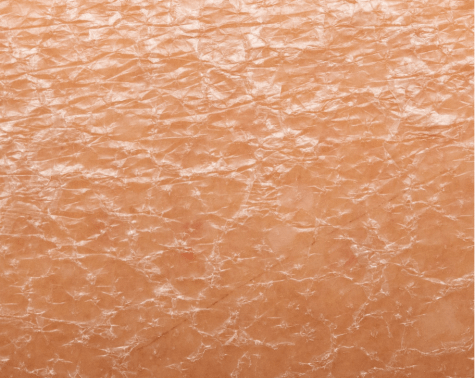
Dry skin is an uncomfortable condition marked by scaling, itching, and cracking. Dry skin can affect any part of your body. It commonly affects hands, arms and legs. Dry skin feels rough and it may develop into cracks leading to premature wrinkles and fine lines.
In smooth and hydrated skin, natural oils prevent the skin from drying out by retaining moisture. This is called the barrier function of the skin. But if your skin doesn’t have enough oil, it loses moisture. This makes your skin dry out and shrink, which can lead to cracking.
If left unattended dry, cracked skin can lead to other complications like pain, bleeding, deeper skin damage, scarring and bacterial infections.
Common Reasons for Dry, Cracked Skin include:
Cold Dry Weather
Chemical Irritants
Hot Water
Medications
The simplest way to treat and care for dry skin is to use a moisturizer and establish a healthy daytime and nighttime skin care routine. This takes care of mild skin damage and prevents any recurrence.
In some patients however the dry cracked skin may not be the primary condition, but a symptom of some other underlying condition. Such conditions cannot be simply treated by a moisturizer and require a proper diagnosis by a dermatologist and a line of treatment with topical and oral medications.
These medical conditions include:
Prevention of simple dry cracked skin without any underlying condition is use of a good moisturizer suitable for your skin type. You may need more than one type of moisturizer based on the areas affected. For example for your hands and feet you require a thick cream that does not come off easily while for your body you need a lotion that spreads easily. Also the moisturizer should be non comedogenic.
While choosing other skin care products or make up products like sunscreens etc. also make sure that they moisturize your skin and not dry it up.
For improving the hydration levels in the skin, the below procedures are the most effective:
Yes, dry and cracked skin can lead to other conditions such as infections if bacteria enter through the cracks, or eczema if the dryness persists and irritates the skin further.
It can be. While dry, cracked skin can arise from various external factors, it may also indicate dehydration if your body lacks adequate water intake.
Yes, consuming diuretics like caffeine and alcohol or salty foods can dehydrate the body, potentially worsening dry, cracked skin.
Absolutely, cold, windy, and dry weather can strip moisture from your skin, leading to dryness and cracking.
Yes, indoor heating can reduce indoor humidity levels, thereby contributing to skin dryness and cracking.
It might, if the environmental factors causing it improve; however, often some form of care or treatment is required to expedite the healing process.
Yes, as skin loses natural oils and elasticity with age, the elderly are more prone to experiencing dry, cracked skin.
Definitely, rough, tight, or itchy fabrics can irritate dry, cracked skin further, while soft, breathable fabrics are gentler on the skin.
Yes, frequent hand washing, especially with harsh soaps, can strip away natural oils and lead to dry, cracked skin.
Yes, sometimes dry, cracked skin could be a symptom of underlying health issues like hypothyroidism or diabetes, which can affect skin hydration.
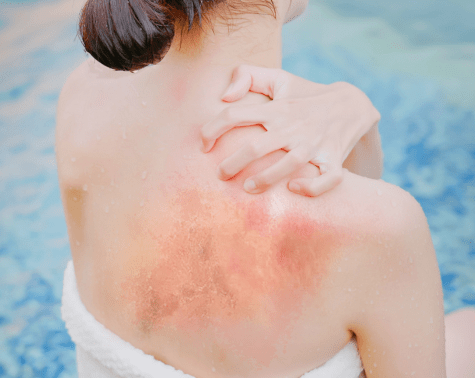
It has been taught to us right from the time we were little toddlers that being out in the sun is great for us. And it is partially true that moderate sun exposure is great for health. From being a great source for generating vitamin D in our body to generating an overall sense of wellness when we are outdoor in the sun.
However we do easily forget that sun is a very powerful energy source and the energy it delivers in the form if UV rays tends to seriously affect our skin. UV rays (ultra violet rays) are energy rays from the sun which are not visible to us and yet constitute a huge amount of energy that our body is exposed to.
UV rays are also of two types – the UVA rays which affect the deeper layers of the skin and the UVB rays which affect the superficial layers of the skin.
Common Conditions that result from excess sun exposure are as below:
Sun Burns: These present as itchy red patches on sun exposed areas.
Sun Tan: These are seen as pigmented patches on sun exposed areas.
PLE: It is seen as an allergic reaction to sun exposure in the form of tiny itchy lesions.
Premature Ageing: Prolonged sun exposure over a period of time leads to premature ageing which is characterized by fine lines and wrinkles.
In addition to this there are also some other skin conditions which are aggravated if not caused by excess sun exposure, namely Freckles, Lentigenes, Melasma etc.
Extreme form of skin damage due to sun exposure can be in the form of skin cancer. (Seen more commonly in fair skinned individuals)
Like with all things in life, prevention is better than cure. One must always the following 5 items for protection from sun exposure:
In addition to oral and topical medications as needed for these conditions, we offer the below procedures that help with the pigmentation related concerns of sun damage:
Laser Skin Rejuvenation
Medical Peels (Chemical Peels)
Microdermabrasion (Skin Polishing)
Iontophoresis (Ionization)
Oxygen Facial
Hydrafacial
Carbon Laser Peel (Hollywood Facial)
Laser Birthmark / Spot Reduction
Meso Glow Therapy
Custom Medical Facials (Skin Rejuvenation Programs)
Full Body Skin Rejuvenation
UVA rays penetrate deeper into the skin and can contribute to premature aging, while UVB rays affect the superficial layers causing sunburns.
Some treatments can alleviate the symptoms and appearance of sun damage, but complete reversal might not be possible; it’s essential to prevent further damage by protecting your skin from the sun.
No, sun damage can affect deeper layers of the skin and potentially lead to DNA damage, increasing the risk for skin cancer.
Yes, prolonged sun exposure can cause hyperpigmentation, leading to spots or patches of skin discoloration.
Sun damage breaks down collagen and elastin fibers in the skin, which can result in a loss of skin elasticity and lead to sagging and wrinkling.
Yes, UV rays can penetrate clouds and still cause sun damage, so it’s essential to wear sun protection even on cloudy days.
Yes, individuals with fair skin, light eyes, and light hair are generally more prone to sun damage as they have less melanin, which provides some protection against UV rays.
Yes, sun damage is cumulative over time, and repeated exposure to UV rays can worsen the damage and increase the risk of skin-related issues.
Yes, excessive sun exposure can dry out the skin and deplete its natural oils, leading to dehydration and dryness.
Yes, the sun’s rays are generally stronger between 10 am and 4 pm, so it’s advisable to avoid sun exposure during these hours or wear strong sun protection.

There are different types of white patches and white spots and these can be poles apart in terms of their causative factors and cures. Hence it is best to see a dermatologist for diagnosis of the issue
It is an autoimmune condition where body’s immune system attacks the melanocytes in the skin which are the cells responsible for producing melanin. Melanin is what provides colour to our skin. Destruction of melanocytes ensure that melanin production is stopped in the area in question and the skin turns ‘white’. Vitiligo is not a contagious disease. It can occur at any age, but is commonly seen between 30- 50 years of age. It presents as well defined white or discoloured patches on any part of the body commonly seen on hands, legs and face.
Vitiligo can be localized (restricted to few areas of the body)
Generalised (most of the areas are involved)
Universal (entire body is involved)
Hair can also get affected and become white.
Also unfortunately the course of this condition is unpredictable and hence there can be a rapid increase or decrease in vitiligo lesions.
Pityriasis Versicolor or P Versicolor is a fungal infection seen in the form of multiple whitish patches and spots mainly on chest, back and face. It is also sometimes called tinea versicolor.
P versicolor normally affects people who may sweat heavily or may have issues with maintaining hygiene. A humid environment is ideal for fungal growth on the skin. This condition is infectious even if it has low rate of spread.
While it is normally described as white patches, it can also appear as reddish or brownish patches.
P alba stands for Pityriasis alba, which is a common skin condition in which first there is an appearance of red scaly patches. When these patches resolve they leave behind areas of hypopigmentation or lighter colour.
The cause for P alba is not known. Some research states that it is a manifestation of another common condition called atopic dermatitis.
IGH is a benign and asymptomatic skin manifestation characterized as diffuse hypopigmented macules, or white spots. The size of the lesions varies from 1-10 mm, but are most commonly 1-3 mm in diameter.
It is mainly caused by ageing and sun exposure over a long period of time. These lesions are generally visible on the arms, legs, back and face.
In addition to oral and topical medications, the below procedures may be useful to help you with de-pigmented skin and white patches etc.:
The risk factors for P alba include dry skin, allergies, family history of eczema, and exposure to harsh chemicals or irritants.
The risk factors for P versicolor include living in a warm and humid climate, having oily skin, and a weakened immune system.
IGH is typically diagnosed by a visual examination of the affected skin by a dermatologist. In some cases, a skin biopsy may be performed to confirm the diagnosis.
To prevent P alba, individuals should practice good skin hygiene, avoid harsh chemicals or irritants, and keep the skin moisturized and hydrated.
To prevent P versicolor, individuals should avoid excessive sweating, wear loose-fitting clothing, and keep the skin clean and dry.
P alba is generally a harmless condition and does not typically cause any complications.
In some cases, P versicolor may cause itching and discomfort, and can lead to skin discoloration or scarring.
There is some evidence to suggest that IGH may be hereditary, but more research is needed to confirm this.
P alba may clear up on its own within a few weeks or months, but in some cases, it may persist for years.
With appropriate treatment, P versicolor typically clears up within a few weeks, but may recur if proper hygiene practices are not followed.
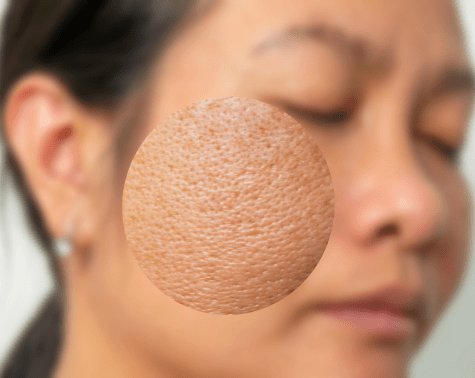
Pores are nothing but the openings of ducts on the surface of the skin. There are two types of pores on the body.
The first ones are responsible for carrying the oil or the sebum to the surface of the skin. Sebum is nothing but a fluid produced by your skin consisting of mainly lipids (fats) and proteins. These pores are present all over your body except on your palms and soles.
The second type of pores are the ones which allow you to sweat. These are present all over your body.
When people talk about enlarged or open pores they generally refer to the oil pores. These oil pores also carry the hair follicles.
Normal functioning of sebaceous pores is to discharge the sebum on the surface of the skin and keep the skin moisturized. However when these pores malfunction they tend to get clogged with sebum (oil), dirt and dead skin cells leading to large pores or enlarged pores or open pores as they are called.
The best mechanisms to help reduce the size of the pores consists of the following three strategies:
In addition to the aesthetic appearance of looking enlarged or open blocked pores are also responsible for almost all acne issues like whiteheads, blackheads, milia etc. Ensuring that the skin is correctly (gently) exfoliated and cleaned is very essential to good skin hygiene.
The best way to keep a check on the size of your pores at home is as below:
To keep the pores clean the below procedures are very effective:
To increase cellular turnover and tighten your skin:
To reduce hair growth permanently:
a. Laser Hair Removal
Yes, open pores can become clogged with oil, dirt, and dead skin cells, leading to acne, blackheads, and other skin issues.
Yes, heavy or oily makeup can settle into open pores making them appear larger, and may also lead to clogging which exacerbates the problem.
No, it’s not possible to completely eliminate open pores as they are natural openings for oil and sweat. However, their appearance can be minimized.
As skin loses elasticity with age, open pores can appear larger. Also, the production of collagen decreases, making the skin less firm.
Staying hydrated helps maintain skin elasticity and can help in minimizing the appearance of open pores.
Yes, stress can trigger oil production which may worsen the appearance of open pores and lead to other skin issues like acne.
Yes, “non-comedogenic” products are formulated to not clog pores, which can be beneficial in maintaining clean pores and minimizing their appearance.
While oily skin types might have more visible pores due to sebum production, other factors like age, genetics, and environmental damage can also cause noticeable pores.
High humidity can lead to increased oil production, which might make pores appear larger. On the other hand, dry climates might reduce sebum but can dehydrate the skin.
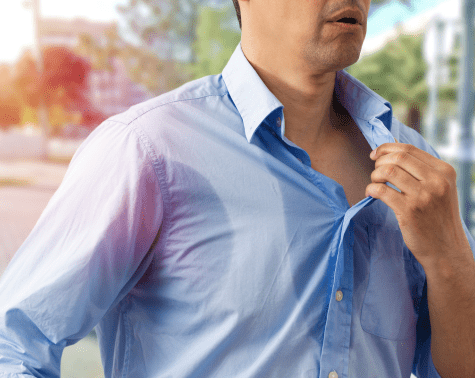
Excess sweating is also known as hyperhidrosis. Sweating is a normal reaction of the body to temperature changes (after exercise, humid weather, post fever etc.) However when one sweats profusely in cool weather or without any obvious reason, it is indicative of hyperhidrosis. Besides disrupting normal daily activities, this type of heavy sweating can cause social anxiety and embarrassment.
This condition can be localised or generalised.
In localised type called primary focal hyperhidrosis, the sweat glands become overactive even if they are not triggered by physical activity or rise in temperature. In this type the sweating can occur on specific body parts like hands, feet, under arms, groins, scalp, face etc. Localised type is genetically predetermined. It is not associated with any medical conditions but it interferes with quality of life.
The second type of hyperhidrosis is called secondary hyperhidrosis or generalized hyperhidrosis. In this type, the sweating occurs all over your body. This type is generally caused by medical conditions like:
Thyroid Imbalance
Diabetes
Menopause
Pregnancy
Nervous System Disorders
Low blood pressure
Certain cancers
It can also be caused by use of certain drugs and medications like antipsychotics etc.
To control this condition the below tips can be tried:
However this being a medical condition, there are no preventive things to do.
Hyperhidrosis treatment can be done by the following mechanisms:
Yes, hyperhidrosis can manifest at any age, though primary focal hyperhidrosis often starts during adolescence or even earlier.
Yes, triggers like stress, anxiety, spicy foods, caffeine, and nicotine can exacerbate hyperhidrosis symptoms.
It can be, as emotions like anxiety or excitement can trigger or worsen sweating in some individuals.
Yes, excessive sweating can cause skin infections, social anxiety, and other emotional distress.
While there isn’t a cure, treatments like iontophoresis, BTX injectables, and medications can manage symptoms effectively.
No, it’s estimated that about 3% of the population is affected by hyperhidrosis, making it a fairly common condition.
Yes, night sweats associated with hyperhidrosis can disrupt sleep, leading to fatigue and irritability.
It can, as excessive sweating, especially in the armpits and groin, creates a conducive environment for bacterial growth leading to body odor.
Yes, a diet high in spicy foods, caffeine, and alcohol can exacerbate hyperhidrosis symptoms.
Primary focal hyperhidrosis has been found to have a genetic component, often running in families.
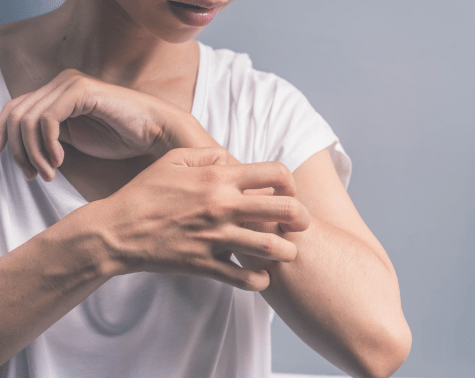
Itching of skin is more a symptom than a condition itself. It has multi factorial origin and can be localized or generalized. Itchy skin is an uncomfortable, irritating sensation that makes you want to scratch. It is also known as pruritus. The most common reason for itching is dry skin. It is more common in older aged people because the skin tends to become drier as the person ages.
Itchy skin can affect small areas, such as the scalp, an arm or a leg or the whole body. Itchy skin can occur without any other noticeable changes on the skin. Or it may be associated with:
Redness
Scratch marks
Bumps, spots or blisters
Dry, cracked skin
Leathery or scaly patches
Localized itching can be caused by any active lesion which causes itching like eczema, psoriasis etc. While generalized itching (all over the body itching) can be caused because of conditions like Hives, Scabies, Generalized Dry Skin etc.
Itching Skin is also a symptom in other systemic disorders like diabetes, thyroid imbalance etc.
The other leading reason for itchy skin are allergies caused by either medications, contact, food consumption, medicines etc.
Symptomatic relief for itchy skin can be achieved with the help of topical medications. Cure for the same would depend on the treatment of the primary condition.
Yes, dehydration can lead to dry skin which in turn can cause itchiness. It’s important to drink plenty of water to keep the skin hydrated.
Excessive sun exposure can dry out the skin and cause sunburn, both of which can lead to itchy skin. It’s advisable to wear sunscreen and reapply it regularly.
Yes, scratching can worsen the itch and even cause skin damage or infection. It’s better to apply a cold compress or use topical treatments to alleviate itchiness.
Yes, stress can trigger or worsen itching in some people. Stress management techniques like relaxation and meditation may help in reducing itchiness.
Over-the-counter creams containing ingredients like hydrocortisone can be effective for minor itchiness. However, persistent or severe itching requires medical attention.
Yes, itchiness can be a symptom of liver diseases like cholestasis. If itchy skin is accompanied by other symptoms like jaundice, it’s important to seek medical care.
Yes, synthetic or rough fabrics can irritate the skin, while soft, breathable fabrics like cotton are less likely to cause itching.
Frequent bathing, especially with hot water, can dry out the skin and worsen itching. It’s advisable to use lukewarm water and moisturize afterward.
Yes, lack of sleep may worsen skin conditions and could contribute to itchiness. Adequate rest is important for overall skin health.
Low humidity can dry out the skin leading to itchiness, while high humidity may promote the growth of irritants like mold and mites which could also cause itchiness. Using a humidifier or dehumidifier accordingly can help maintain a skin-friendly environment.
Yes, itchy skin can be common during pregnancy due to hormonal changes, skin stretching, and other factors. However, severe itching could be a sign of an underlying condition and should be evaluated by a healthcare provider.


MD, DNB - Dermatology & Venereology
Dr. Sejal has dual degrees of MD and DNB in Dermatology and Venereology. She has worked with some of the senior most doctors in the largest government and private hospitals for more than 15 years. Over these years at InUrSKn, she has treated thousands of patients for a variety of conditions and needs across dermatology, venereology, cosmetology and trichology domains.
Dr. Sejal believes in a minimum intervention approach to health and believes that educating and empowering the patient is the key to good health.
Every patient at InUrSkn is seen personally by Dr. Sejal without any time limit, where she discusses the patient’s concern in detail along with understanding the history of their health and carrying out a personal examination.
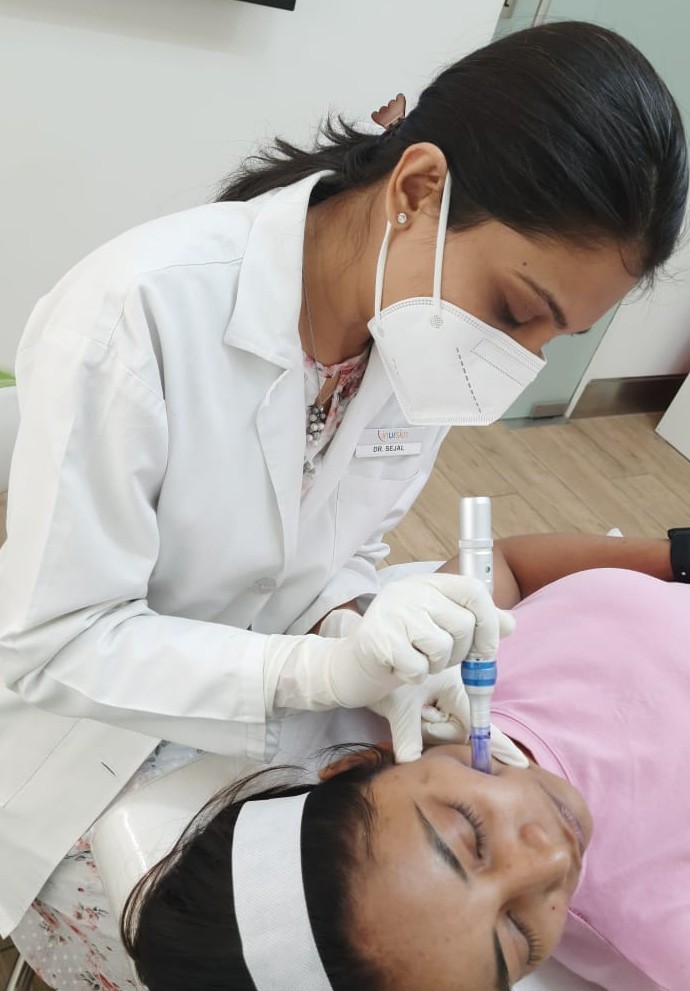
At InUrSkn, we believe that all patient care must be:
Dr. Sejal and her team live by the philosophy of never prescribing medications or procedures that may not be required. When addressing a concern, Dr. Sejal ensures that a detailed history and context are thoroughly understood. Medical tests are prescribed by Dr. Sejal only when she believes there is more to the concern that needs to be addressed, ensuring the patient truly benefits.
Multiple spacious procedure rooms
Full-fledged operation theatre
In-house laboratory
Latest technology
100+ Skin, Hair & Body Procedures offered
Frequent disinfection of all clinic spaces with UVC light and WHO-approved chemicals
Large waiting and treatment areas to ensure social distancing
Regular health checks for all patients and staff
Safer than salons, chain-clinics & hospitals
PPEs for patients and staff
Personal attention from Dr. Sejal Saheta (MD, DNB) - with 15+ years of experience
CIDESCO-certified aestheticians with minimum 3 years work experience
500+ Positive Reviews on Practo and Google
5000+ Patients treated last year alone
8000+ Procedures completed
| Prices | ||
|---|---|---|
| Procedure | ||
| In Clinic Consultation with Dr. Sejal | ||
| In Clinic Consultation with Dr. Sejal | ₹1100 | |
| Online Consultation with Dr. Sejal | ||
| Online Consultation with Dr. Sejal | ₹900 | |
Pricing (Inclusive of taxes)


Common skin conditions are often caused by a combination of environmental factors, genetics, and individual skin types.
Prevention measures include maintaining good hygiene, avoiding harsh chemicals, protecting skin from excessive sun exposure, and following a healthy skincare routine.
It’s advisable to see a dermatologist if a skin condition is persistent, worsening, or causing significant discomfort or concern.
Treatment effectiveness varies among different skin conditions. Some may be managed or alleviated with proper care, while others might require medical intervention.
It depends on the specific condition. For example, fungal or bacterial infections can be contagious, while conditions like dry skin or sun damage are not.
Accurate diagnosis often requires a professional evaluation by a dermatologist who can differentiate between similar-looking conditions and provide appropriate treatment.
While some over-the-counter products may provide relief, it’s advisable to consult a dermatologist for personalized advice, especially for persistent or severe conditions.
Aging can lead to drier skin, reduced elasticity, and other changes that may increase susceptibility to certain skin conditions.
Yes, lifestyle changes like a balanced diet, proper hydration, and stress management can promote skin health and possibly improve skin conditions.
Hormonal fluctuations can trigger or exacerbate skin conditions like acne, rosacea, or other inflammatory skin conditions.
Some skin conditions might indicate underlying systemic issues or may lead to secondary infections if not properly treated.
Some skin conditions might recur, especially if trigger factors are not addressed. Continuous care and following a dermatologist’s recommendations can help manage recurrence.
Skin conditions can significantly affect self-esteem, social interactions, and overall quality of life. Seeking timely treatment and support can help manage these impacts.


It is sometimes the small things in life that make the biggest difference. Dr. Sejal firmly believes in the concept of continuous imporvement be it in her practice or a patient's health.
Here you will find quick tips on all things related to skin, hair and body.
We at InUrSkn are cognizant that we need to constantly deliver value to our patients.Keep abreast of the latest offers at the clinic that are structured by Dr. Sejal to deliver the highest value and the best results.
With decades of experience behind her, Dr. Sejal often gets the opportunity to influence patients who may be seeking answers in the field of dermatology through the medium of magazines and dailies.
Here you will find some of Dr. Sejal's articles in teh most reputed publications.
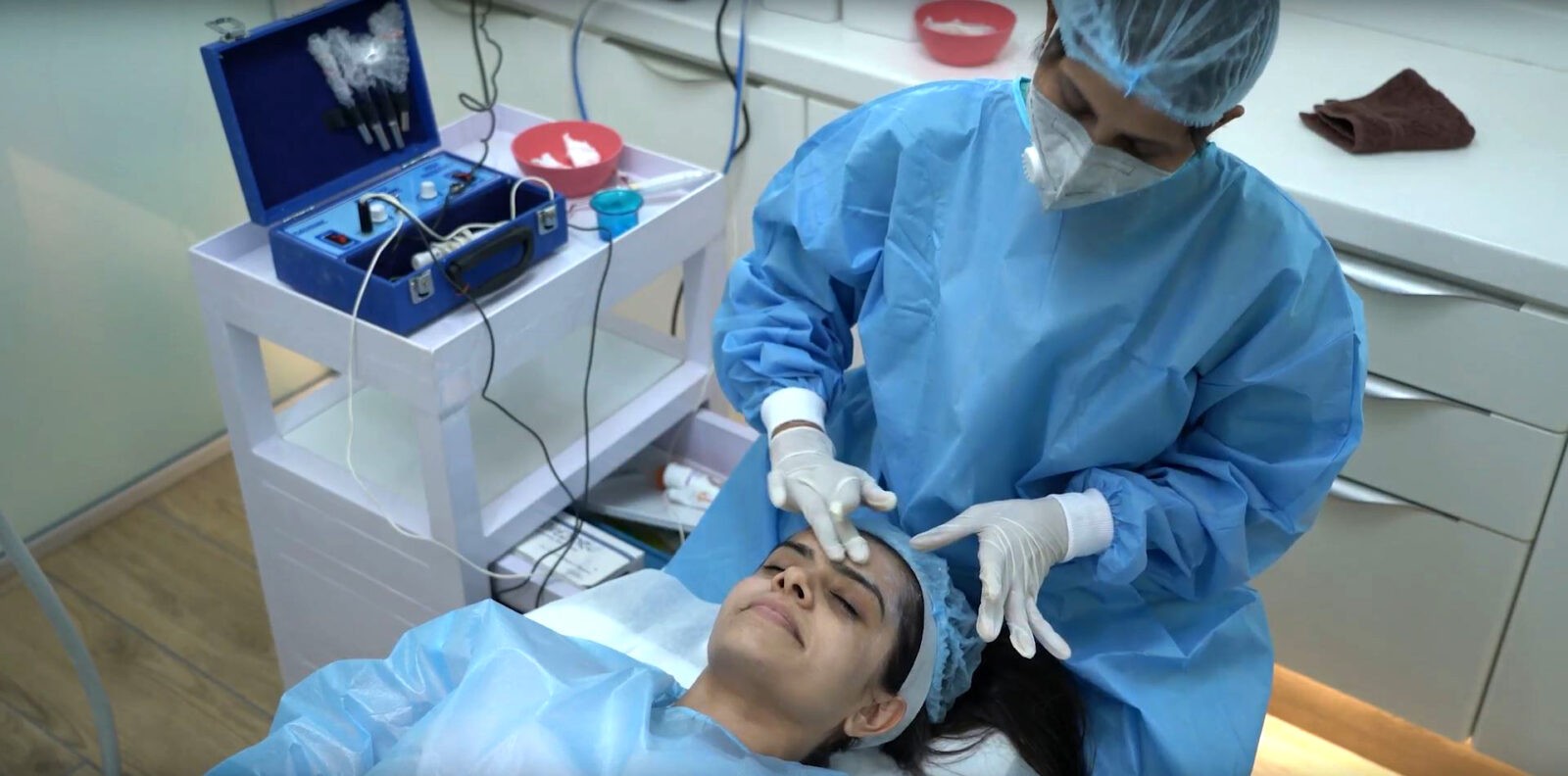
Ready to book an appointment?
BOOK
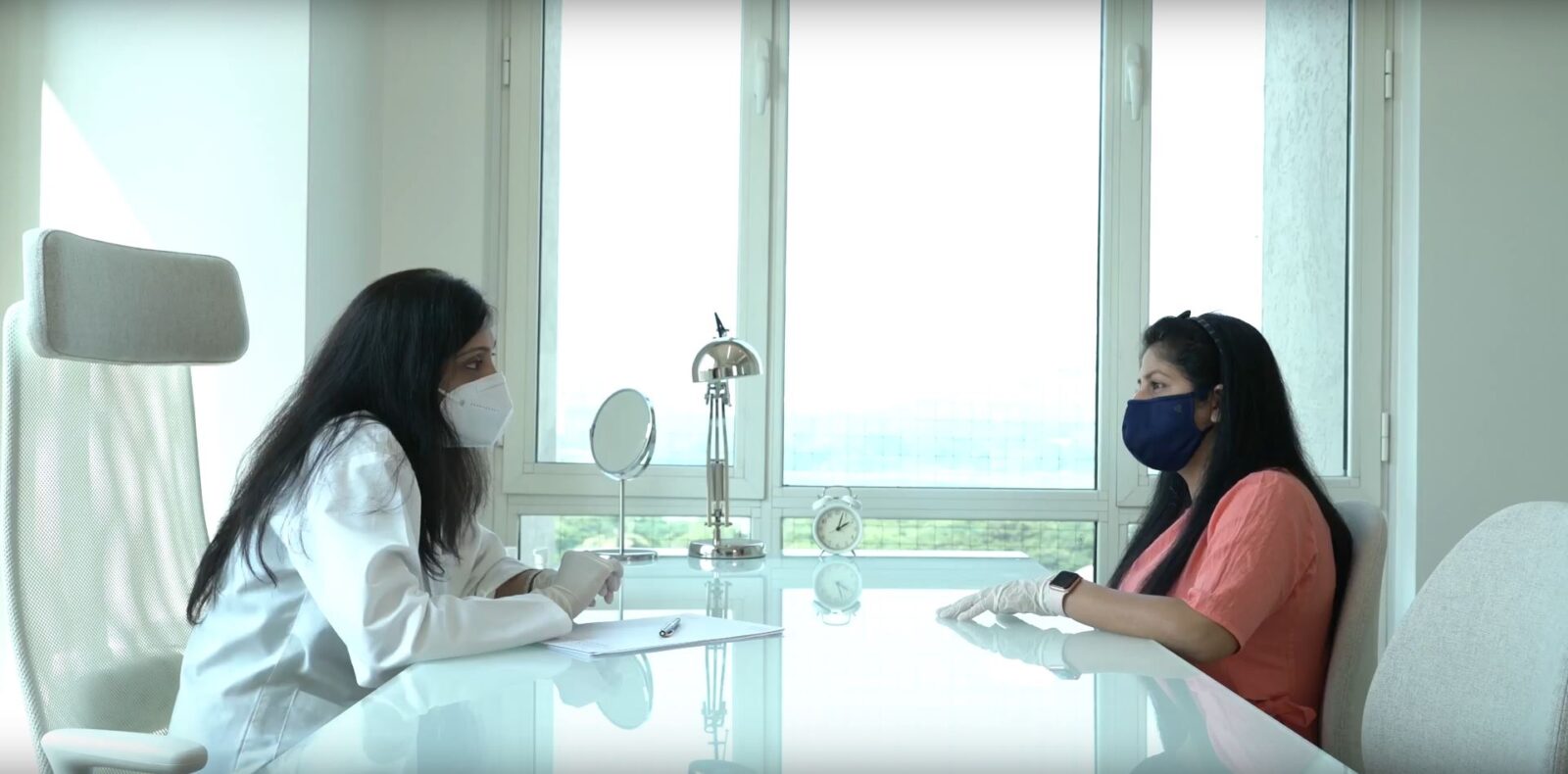
Want to talk about your needs ?
MAKE AN enquiry
